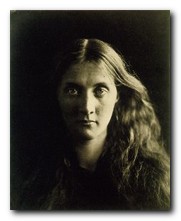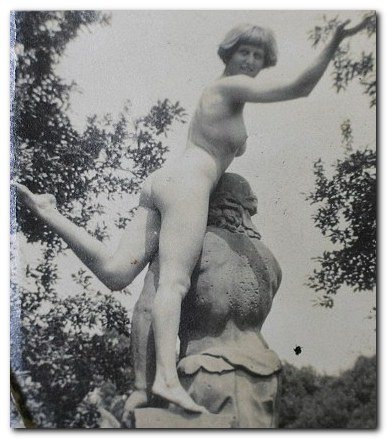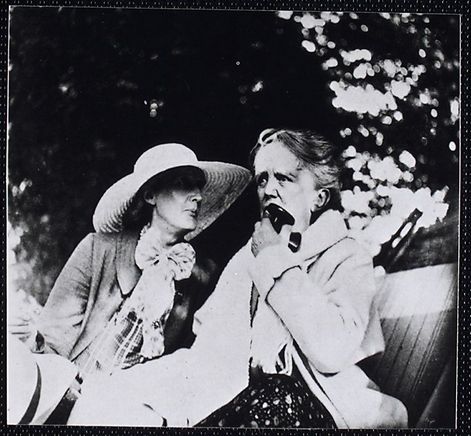biographical studies of major figures in her life
Virginia Woolf’s Women is a study of the principal females in Virginia Woolf’s life and the influences they may have had in shaping her views of the world. It begins naturally enough in her early home life. Vanessa Curtis argues that Virginia Woolf inherited suffering, illness, and self-deprecation from her grandmother Mia and her mother Julia Stephen whose saintly beauty was cut short by an early death when Woolf was only thirteen. In this environment she also had direct personal contact with the concept of ‘the angel of the house’ against which she was later to argue. Its author Coventry Patmore was a visitor to the house as a friend of her grandmother.

Julia Stephen
Following Julia’s death, Woolf’s older step-sister Stella Duckworth became a surrogate mother to the seven children of the Stephen family. But no sooner was she established in this role than two events snatched away her comforting presence – first her marriage to Jack Hills, and then immediately following the honeymoon, her sudden death.
Curtis traces echoes of these events in The Voyage Out and Night and Day and even the much later To the Lighthouse. Of course it is legitimate to see elements of biography expressed in the fiction – but it is not a legitimate practice to read back from fiction as a valid source of biographical information. More legitimately, Curtis attributes Woolf’s scepticism about the prospects of successful heterosexual love to this trio of family martyrs.
The next major figure is her elder sister Vanessa (Bell), who took over from Stella as head of the household. The two sisters had a very close relationship, yet one which occasionally spilled over into rivalry. Vanessa was a liberating factor in organising the family’s move from Kensington to Bloomsbury after their father’s death. She also remained closely alongside Virginia when she sank into periods of depression and near-madness.
The two sisters established weekend homes near each other in Rodmell and Charleston in East Sussex, and they shared a common circle of friends amongst the various members of the Bloomsbury Group. The roles of care-giver and invalid were only ever reversed on the occasion of Vanessa’s collapse when her son Julian was killed in the Spanish Civil War in 1937.
Even Bloomsbury enthusiasts might not recognise the importance in Woolf’s life of the next figure – Violet Dickinson – a six foot tall upper class woman (seventeen years older) who was a lifelong supporter and Woolf enthusiast. It was Dickinson who first introduced her to newspaper and magazine editors – which enabled her to establish herself as a reviewer and a journalist.
Curtis speculates about the exact nature of the relationship between the two women, her uncertainty reflected in the fact that she calls it Woolf’s “first emotional and physical love” whilst admitting that there is no evidence of any physical connection between them. Her summing up is probably more accurate – a ‘warm-up’ for the later relationship with Vita Sackville-West.
Woolf’s relationship with Ottoline Morrell does not reflect well on her in terms of sincerity, or moral integrity. Like many of the other artists and writers who accepted Morrell’s generous hospitality at Garsington Manor, she repaid it by scoffing and making fun of the hostess behind her back.
He relationship with Katherine Mansfield was of a different order. The two writers circled round each other, both of them aware that they were literary rivals, yet respectful of each other’s work. They chose similar topics to write about, and for a while even had similar literary styles. They shared a profound scepticism about heterosexual males, and both wrote cautious tales of Sapphic desire. Following Katherine Mansfield’s early death in 1923, Woolf expressed the wish that she had been closer to her rival.

Dora Carrington
A whole chapter on Dora Carrington fails to establish any significant influence on Woolf herself, despite uncovering many similarities between them as creative artists. The two women were simply rivals for the friendship of Lytton Strachey, to whom they were both attached – and Carrington won hands down on that attachment, for which she paid with her life.
Curtis has more success, understandably, with Vita Sackville-West. The history and nature of their affair is well known – an affair facilitated by the fact that neither of them had sexual relationships with their own husbands. There is a detailed tracing of the ups and downs of the emotional tensions between them, but the account ignores opportunities to consider any possible mutual influence as writers.
This is a loss, because at the time their relationship, Sackville-West was at the height of her fame as a writer, and she was actually published by Virginia and Leonard Woolf at the Hogarth Press. But by way of compensation Curtis does acknowledge and discuss Vita’s significance as the inspiration for Orlando.

Virginia Woolf with Ethyl Smyth
The most extraordinary figure is saved for last. Ethyl Smyth was a pipe-smoking lesbian feminist composer, who by the time she met Woolf was seventy-three years old, stone deaf, and sporting an enormous ear-trumpet. Nevertheless, she fell in love with the much younger writer, and although this feeling was only weakly reciprocated Curtis makes a reasonable case for her influence on Woolf’s work as a writer.
The first influences were Smyth’s radical feminism, her support for the Women’s Social and Political Union (WSPU) and her struggles to find acceptance as a female creative artist in a musical world which was dominated by men (as it still is). Curtis points out that these topics, which Woolf discussed with Smyth, found their way directly into the bombshell polemic Three Guineas. And the other influence was that Woolf introduced musical notions of composition and form, particularly into her later works.
There are no surprise revelations in these studies: most of the information will be well known to Bloomsbury enthusiasts, and Woolf’s life has been worked over thoroughly by any number of biographists. But as a general introduction to the social and intellectual milieu of the period it’s an excellent piece of work, well illustrated, and supported by a full scale critical apparatus.
![]() Buy the book at Amazon UK
Buy the book at Amazon UK
![]() Buy the book at Amazon US
Buy the book at Amazon US
© Roy Johnson 2014
Vanessa Curtis, Virginia Woolf’s Women, London: Robert Hale, 2002, pp.224, ISBN: B00KXX3TCU
More on Virginia Woolf
Virginia Woolf – web links
Virginia Woolf – greatest works
Virginia Woolf – criticism
More on the Bloomsbury Group